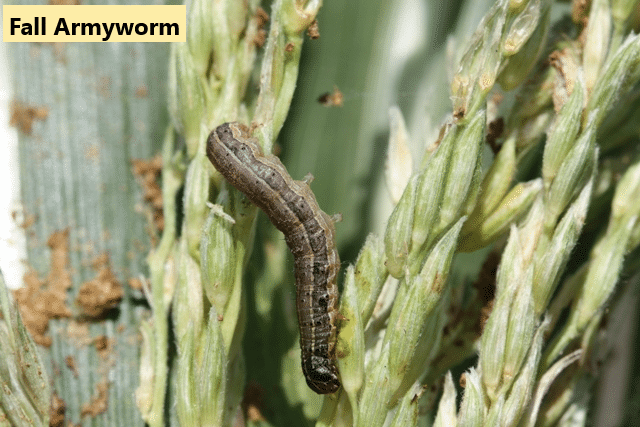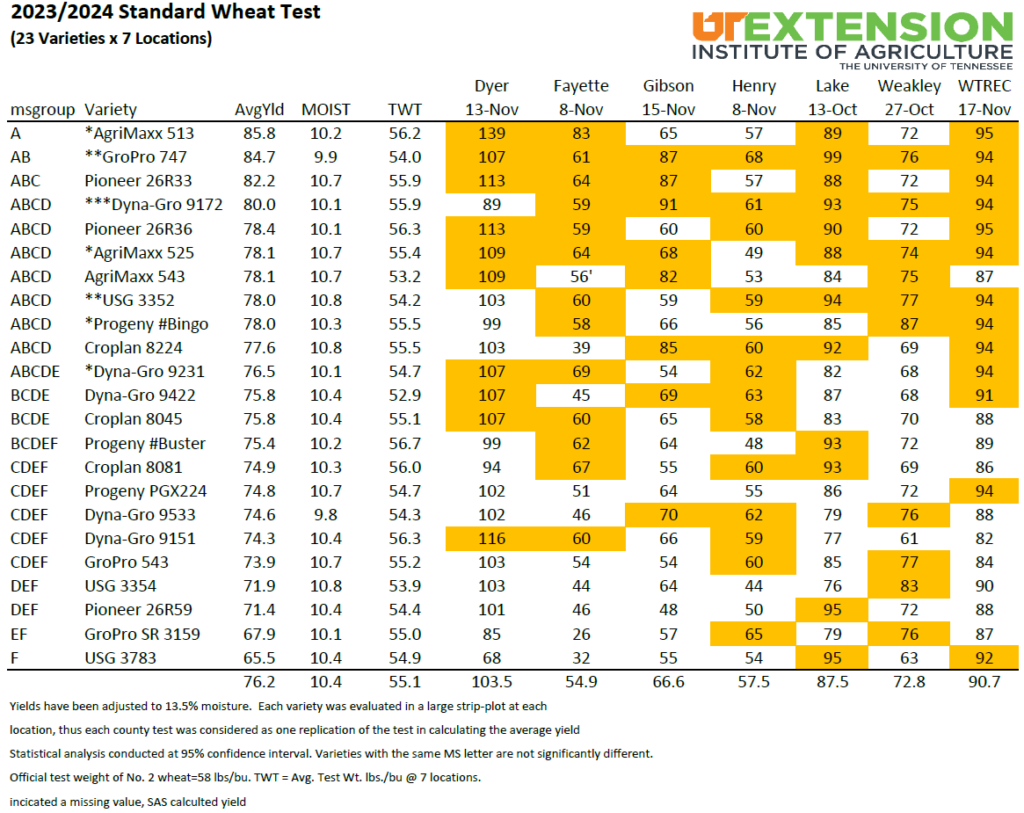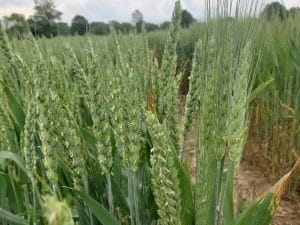2025 CST Wheat Results
Last fall, we planted 10 locations and had 6 of those make it into the table. We lost the others to this wet weather that seems to stick around. Overall, better yields around W. TN than I was expecting. We had several acres planted a little later than hoped for and then a wet sparing had quality and yield goals questionable.
80 bu. average across our 18 varieties in 6 locations. A tight group with a 10 bushel range keeps the mean separation close at a 95% confidence interval.
2025 CST Wheat Table

Yields have been adjusted to 13.5% moisture. Each variety is evaluated in large strip-plots at each location, thus each county test is considered as one replication of the test in calculating the average yield.
Statistical analysis is conducted at 95% confidence interval. Varieties with the same MS letter are not significantly different.
Official test weight of No. 2 wheat= 58 lbs/bu. TWT was averaged from 5 locations.
(‘) indicates a missing plot, SAS calculated yield.
Thank you to all those producers, agents, and industry for your support with our CST programs.
Please contact your local County Extension office for more information.







